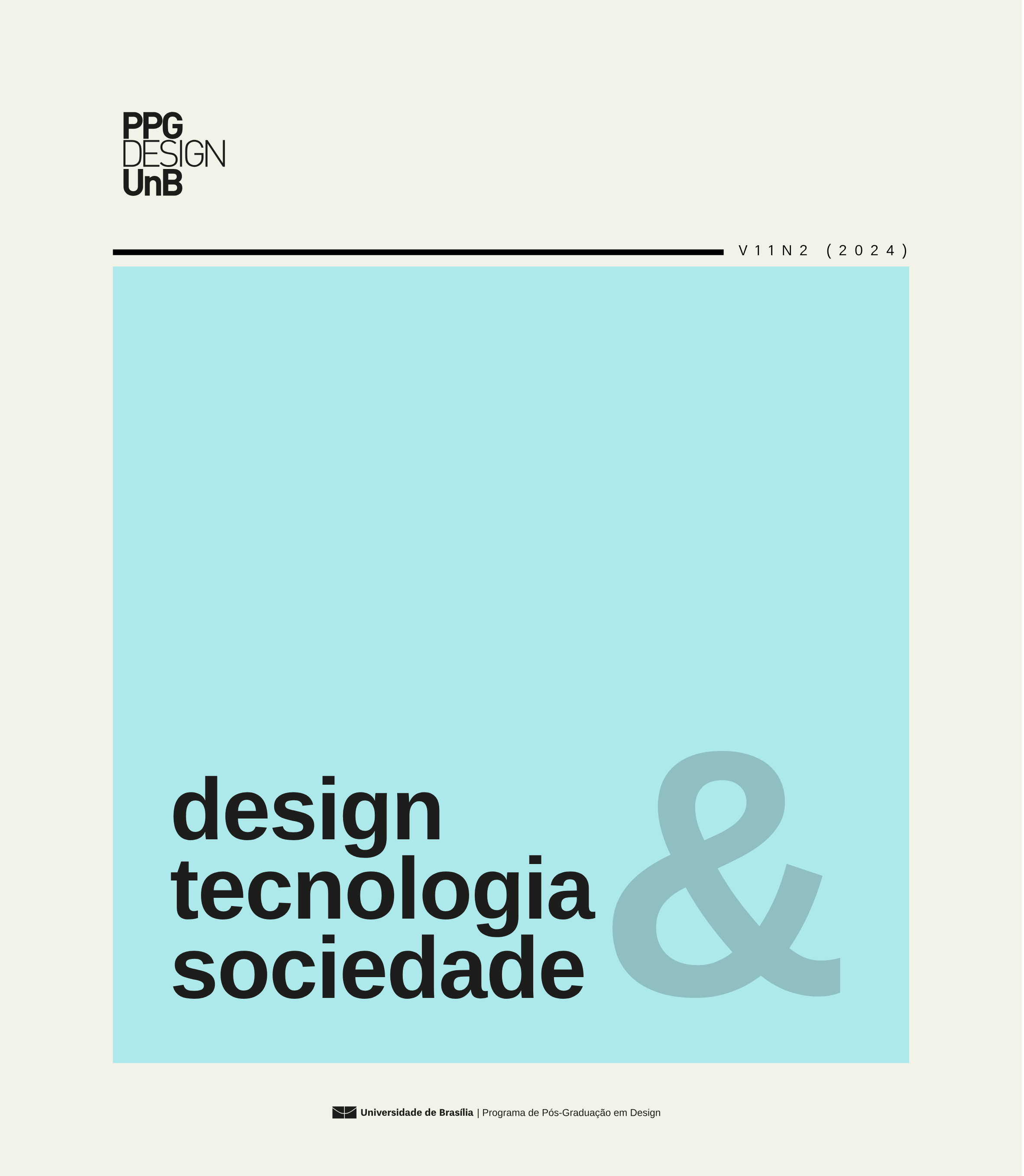Padrões de design de mobiliário e de composição do quarto infantil
Keywords:
mobiliario infantil, design de interiores, quarto do bebê, conceito de infânciaAbstract
The purpose of this article is to identify the current furniture design patterns and compositions that have been established for children's bedrooms in the city of Rio de Janeiro. The research was based on the collection and analysis of data about children's furniture offered by manufacturers of this category. Starting from the understanding that the concept of childhood is a social construct, we weave the history of the emergence of this idea in western society, relating it to furniture aimed at this age group. Analysis of the results reveals the equipment considered essential; the predominant aesthetic aspects; the influence of Maria Montessori's method and the development of playful and multifunctional furniture, in addition to discussing its implications. It is also noteworthy that the subdivision of childhood into different phases represents an opportunity for both the production and consumption of differentiated furniture and may lead to functional obsolescence of children´s bedroom
Downloads
References
ASSOCIAÇÃO BRASILEIRA DE NORMAS TÉCNICAS - ABNT NBR 15860-1:2016 – Móveis - Berços e berços dobráveis infantis, tipo doméstico. Parte 1: Requisitos de segurança. 2016.
ARIÈS, Philippe. História Social da Criança e da Família. Rio de Janeiro: Zahar, 1978.
BRADLEY, R., CALDWELL, B., et al. Home environment and cognitive development in the first 3 years of life: A collaborative study involving six sites and three ethnic groups in North America, Developmental Psychology, 25, 217-235, 1989.
DANTAS, T. C. F. O mobiliário infanto-juvenil da casa paulista na década de 1950 e suas relações com o espaço físico da criança. 360p. Dissertação (Mestrado) – Faculdade de Arquitetura e Urbanismo, Universidade de São Paulo. São Paulo, 2012.
FORTY, Adrian. Objetos do desejo: design e sociedade desde 1750. São Paulo: Cosac Naify, 2007.
IIDA, I.; GUIMARÃES, L. B. M. Ergonomia: projeto e produção. 3. ed. São Paulo: Blucher, 2016.
INSTITUTO NACIONAL DE METROLOGIA, NORMALIZAÇÃO E QUALIDADE INDUSTRIAL - INMETRO. Regulamento técnico da qualidade para berços infantis. Anexo I da Portaria Inmetro nº 53/2016 Rio de Janeiro: Ministério do Desenvolvimento, Indústria e Comércio Exterior, 2016. Disponível em: <http://www.inmetro.gov.br/legislacao/rtac/pdf/RTAC002376.pdf>. Acesso: julho 2019.
MCKEY-PAZ, K. On growth and development: housing environment impacts on children's development and its relevance in interior design solutions 2012, 85p. Dissertação (Mestrado em Ciência) College of Technology, Eastern Michigan University. Disponível em: http://commons.emich.edu/theses/433 Acesso: maio 2018
MONTESSORI, Maria. The Montessori Method: scientific pedagogy as applied to child education in "the children's houses". New York: Frederick A. Stokes Company, 1912a
MONTESSORI, Maria. The absorbent mind. United States of America: Dancing Incorn Books, 2016b
OLIVEIRA, L. A.; et al. Avaliação e adequação do mobiliário infantil para estruturação de check list de conformidade. GEPROS. Gestão da produção, Operações e Sistemas. Ano 7, n. 3, jul-set/2012, p. 91-106. Disponível em: <https://www.gepros.feb.unesp.br/index.php/gepros/article/viewFile/645/453> Acesso:11 maio 2018
PAPALIA, D. E.; et al. Desenvolvimento Humano. 8ª ed. Porto Alegre: Artmed, 2006.
PASCHOARELLI, L. C. A história dos produtos industriais destinados ao público infantil: aspectos da interface entre ergonomia e design. Revista Educação Gráfica. Bauru, v. 2, n. 2, p. 79-84, 1998. Disponível em: <https://www.researchgate.net/publication/281293627> Acesso: 11 maio 2018.
PIAGET, J. A epistemologia genética. 2. ed. Petrópolis: Vozes LTDA., 1973.
RIBEIRO, Liliana. Design de Mobiliário Adaptável ao Crescimento da Criança. 121p. Dissertação (mestrado) – Faculdade de Engenharia, Universidade do Porto. Porto, 2012.
RODRIGUES, L.; GABBARD, C. Avaliação das oportunidades de estimulação motora presentes na casa familiar: projecto affordances in the home environment for motor development. Desenvolvimento motor da criança. Lisboa: Edições FMH, p. 51-60, 2007. Disponível em: http://www.ese.ipvc.pt/lprodrigues/Documents/Rodrigues%20&%20Gabbard%202007.pdf> Acesso: 22 maio 2018.
SANTOS, G. S. O crescimento e desenvolvimento da criança. (Sl.) 2006. Disponível em: https://www.docsity.com/pt/o-crescimento-e-desenvolvimento-da-crianca/ 4774646/ Acesso: 16 junho 2019
VAN SLYCK, Abigail. Kid Size: The Material World of Childhood: An Exhibition Review, Winterthur Portfolio, 39 no. 1, p. 69-78. Connecticut: The University of Chicago Press. 2004. Disponível em: http://digitalcommons.conncoll.edu/archfacpub. Acesso: 11 Junho 2018.
Downloads
Published
How to Cite
Issue
Section
License
Copyright (c) 2024 Revista de Design, Tecnologia e Sociedade

This work is licensed under a Creative Commons Attribution-NonCommercial-NoDerivatives 4.0 International License.
Authors retain the copyright and grant the journal the right of first publication, with the work simultaneously licensed under the Creative Commons Attribution License which allows the sharing of work with acknowledgment of authorship and initial publication in this journal.



